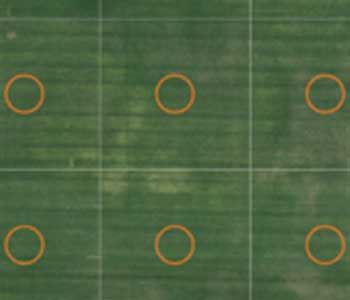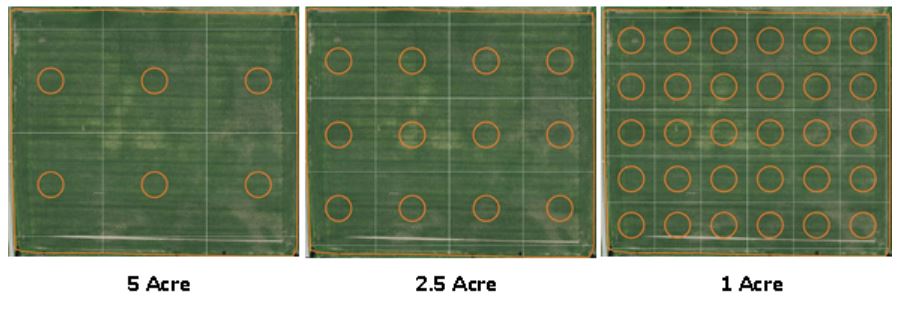Field Fertility Picture = Soil Sample Resolution
Oct 14, 2019

Fall has arrived, which in the agronomy world means get soil sampling done as fast as possible before the ground freezes up. I’m often asked by farmers, how many soil samples do I need for a field? Over the last 20 years the default answer has become; one for every five acres because that is the sampling intensity required in Wisconsin for Nutrient Management Plans. It’s not a bad answer, but maybe we should be asking some other questions first.
- How variable is the field? (Soil types, topography, merged fields, strip tillage applications, fertility)
- How do you plan to use the results? (Flat rate or VRT fertilizer applications)
- How clear of a fertility picture do you want in order to make 4 years of economic decisions about the field?
1 sample per >10 acres: Is like a snowy channel you can kind of make out what you are seeing part of the time. Always frustrating and not worth spending your time watching.
1 sample per 5 acres: Over the air channels worked just fine most of the time but were in standard definition. We lived with it a long time but always knew there was room for improvement.
1 sample per 2.5 acres: Eventually HDTV arrived and wowed everyone with the clarity we could watch movies and TV at home. In most cases this is good enough resolution to give us a good idea of what is happening in a field.
1 sample per <1 acre: We didn’t even know we wanted 4K Ultra but it has quickly become the new standard for TVs giving us the clearest picture possible today. Don’t be surprised when the fertility picture changes with higher resolution soil sampling.

Smart Fields: Smart TVs that connect to every type of media available through the internet are also becoming a new standard. Imagine instead of taking soil tests once every 4 years, you will have a sensor network in the field to monitor our soil moisture, temperature, and fertility through the entire growing season. Some of the technology has been used in irrigated fields for years but the fertility sensors are still a few years away.
The main objection to this idea is the expense for additional soil tests. Let’s break it down for the most expensive option: 1 sample/acre split over 4 years costs $5/acre/year, while typically we spend $50-$150/acre/year on fertilizer. This equates as a 10:1 to 30:1 investment in a 4K picture to make decisions on $200-$600 worth of fertilizer next 4 years. With this picture we can also apply the fertilizer VRT placing it only where we need it in the field which often reduces total fertilizer needed, saves money, and increases yield across the field.
Ultimately, ask yourself what resolution fertility picture will help make the best decisions for my fields over the next 4 year? Or what type of TV do I prefer to watch today?
Paul Roemer
Agronomist - Precision Ag Data Specialist
Country Visions Cooperative